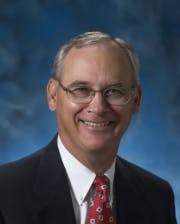Rather than respond to a new question this time, I’ve chosen to do a follow-up piece from my last writing.
John Lydgate, an English monk and poet from the 14th century, wisely said: “You can please some of the people all of the time, you can please all of the people some of the time, but you can’t please all of the people all of the time.”
My last article is living proof that this statement is just as accurate now at it was way back then.
There were a few folks who expressed their disappointment in IW and me on LinkedIn because they assumed we were guilty of furthering the myth that lean is just a set of tools. Obviously those who protested have not read any of my previously published perspectives on leadership. Absent that they took my article about the role of Six Sigma in a lean transformation out of that context. But fair enough -- I do respect their passion and commitment even though they were preaching to the converted.
I’ve been working on continuous improvement for 30 years in the arena, not as a consultant, and I’ve continued that in my semi-retirement because of my ongoing quest to save and create manufacturing jobs in this country. I now share knowledge and mentor leaders to play their critical roles in leading culture change in their companies. I work with people from the CEO to the shop floor. It’s my life’s work. It’s my passion.
Culture change is not a stand-alone “project.” It is the result of the entire organization thinking, working and behaving differently."
My strong view is that the many closures of manufacturing sites, and the enormous loss of good paying jobs over the last three decades, are a leading reason why our middle class ranks continue to shrink. Why the American dream keeps getting farther away for young adults. And it’s a leadership issue. I get it! It requires culture change. I get it! But it also requires the expert and disciplined use of all of the improvement tools available to us.
As I thought more about my last article, the only thing I would change if I wrote it today is that I would try to make it clear that the effective use of the toolset is supportive of the necessary culture change because it reinforces that what we’re doing is working. That’s an important factor, i.e. to make the linkage between people who are thinking and behaving differently and as a result are accomplishing major improvement in the business. It’s a real confidence builder and opens up minds about what can be accomplished when leaders and hourly people work together and build trust and teamwork.
I’d also like to offer some other things to think about regarding the progression of continuous improvement.
In my opinion, the most successful businesses that have been on the journey for more than 10 years have made the process design their own. They aren’t purely a TPS or a TQM or a lean company. They’ve taken the best thinking from each methodology and converted it into a hybrid based on their intimate understanding of their business and their people. They own it. It’s theirs. I’ve heard my AME friend, Doc Hall, communicate the same thinking. While I can’t rattle a long list off the top of my head, there are four companies I know of who have their own methodology and in some cases actually spun off a consulting arm in order to share their process with other like-minded companies. They are Milliken, Parker Hannifin, Ingersoll Rand and my former company, General Cable.
It simply doesn’t matter what a company calls its continuous improvement journey as long as it understands what it takes and is committed for the rest of its life to stay on the journey relentlessly."
At the end of the day, I would suggest that it simply doesn’t matter what a company calls its continuous improvement journey as long as it understands what it takes and is committed for the rest of its life to stay on the journey relentlessly.
From my point of view, as long as companies are seeking excellence and creating the infrastructure, education and training, communications, hourly associate involvement, using the necessary tools, etc., that are required to deliver best-in-class value to their customers and to the business, then I simply say, “Hooray and keep going!”
Along the way, however, if they expect to sustain excellence long-term, it is very much dependent upon sustaining their leaderships’ constancy of purpose, sense of urgency, their own behavior changes, and overall business competence.
All leaders should understand that they live in a fish bowl. Everyone in the organization, starting from the very bottom of the structure, layer by layer, right on up to the CEO and the board, is watching their actions to see if they mirror their words. If there’s a match, the company has a chance.
Leaders must also realize that creating a sustainable culture change can take years -- but it can go backwards very quickly and ultimately resort to the old cultural paradigms when there is evidence that any of the company’s leaders are not in alignment or are not trustworthy.
Each leader, regardless of whether they’re the CEO or a shop-floor supervisor, must commit to leading with a higher set of expectations. If each one is not committed to working, thinking and behaving differently for the rest of their careers, then they need to leave.
And boards of directors need to be listening because that goes for the CEO and the other directors as well. Culture change is not a stand-alone “project.” It is the result of the entire organization thinking, working and behaving differently.
“Frequently listen to people outside your own paradigm who aren’t limited by your own set of rules and regulations.”
--Poster seen on a training room wall, author unknown





